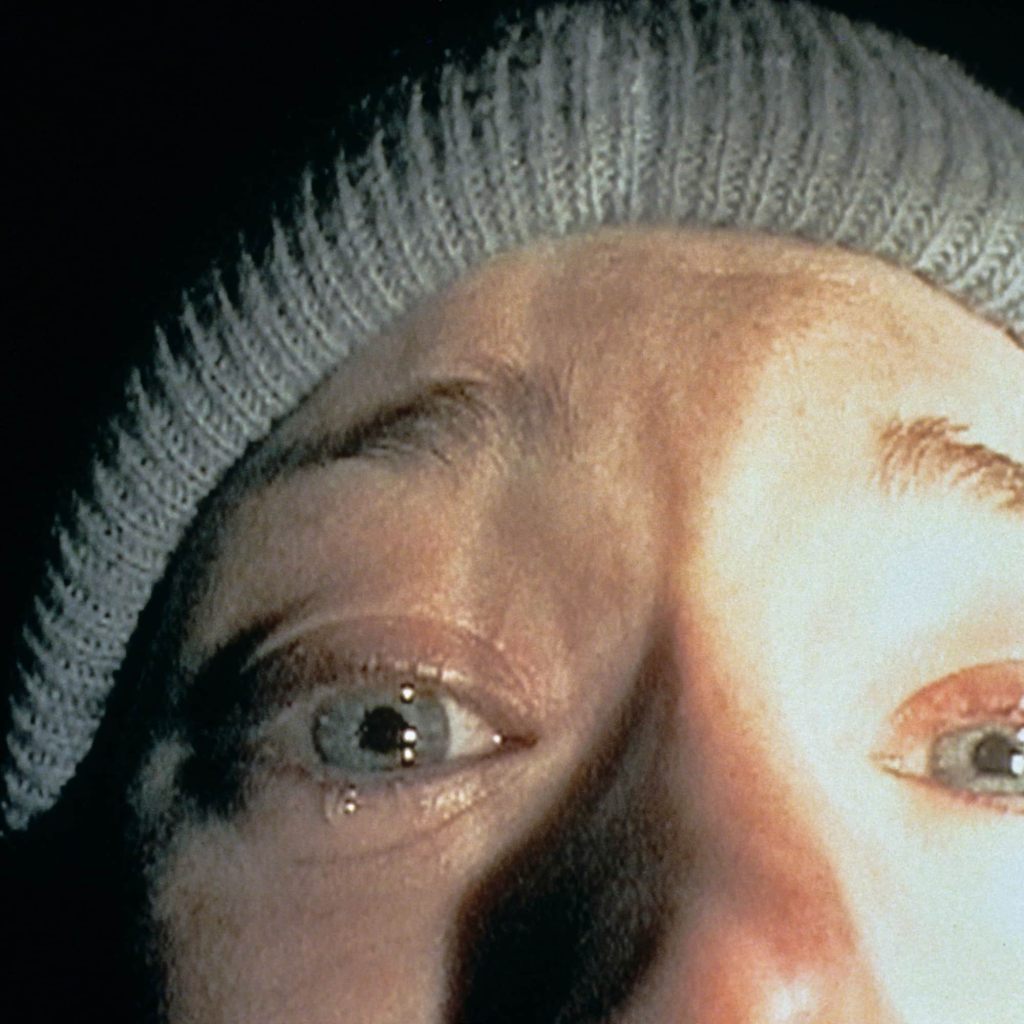Although The Blair Witch Project didn’t create the found-footage genre – depending on who you ask, that honor goes to either 1980’s Cannibal Holocaust or 1961’s The Connection – it’s arguably one of the most well-known movies. When the film first premiered back in 1999 with a plot that seemingly follows three film students making a documentary about the Blair Witch, no one could’ve predicted the lasting impact it would have on the horror genre and filmmaking as a whole.
Since The Blair Witch Project, a number of films have tried (and failed) to capture what made it so successful: its unknown cast, the way it blurs fact and fiction, and its guerrilla marketing tactics. Movies like Paranormal Activity and Cloverfield have been able to utilize some of that Blair Witch magic as inspiration, leading an entirely new generation of fans to discover the film. Before the movie comes to Hulu on Nov. 1, you can check out the three ways The Blair Witch Project has influenced found-footage films.
Related: 10 Frightfully Good Horror Movies and TV Shows Coming to Netflix in November
Everett Collection / Artisan Entertainment/Courtesy Everett Collection
By Having a Cast Full of Unknown Actors
What seems to be the key factor in whether or not a found-footage film will succeed, at least when it comes to horror, is having a cast full of unknown or up-and-coming actors. Casting an A-list celeb puts the film at risk because there’s a chance the audience will not fully buy into the premise. With Blair Witch, having a cast of lesser-known actors made it harder for people to dispute what was going on. Granted, that may be a little harder to do now than it was in 1999 with social media and all.
Everett Collection / Artisan Entertainment/Courtesy Everett Collection
By Blurring the Lines of Fact and Fiction
Most people love the idea that something is potentially “based on a true story” – that’s the entire hook of found footage. The buzz around Blair Witch was due in part to the guerrilla marketing the movie’s team had in place prior to its release, but it was the legend of the titular Blair Witch and the idea that people actually went missing that drew everyone in. Blurring the lines of fact and fiction has also worked for found-footage films like Paranormal Activity, [REC], and to a lesser extent, The Gallows.
Everett Collection / Artisan Entertainment/Courtesy Everett Collection
By Having an Excellent Marketing Campaign
Even if you haven’t seen Blair Witch, you probably remember the stellar marketing. In 1999, the internet was still new and people were much more likely to believe whatever they came across was a fact. The filmmakers used this to their advantage and created a website that perpetuated the idea that the Blair Witch legend had been around for centuries, along with pages detailing backgrounds of the “missing students” and interviews from their “families.” The online efforts were also supported by physical missing posters the studio placed on college campuses.
Since then, viral marketing has had to adapt in order to actually make an impact, but even recent films have tried to adopt the guerrilla marketing methods. 2015’s #CharlieCharlieChallenge, a Ouija-board like game where people summon a demon named Charlie, was actually a promo for The Gallows.

